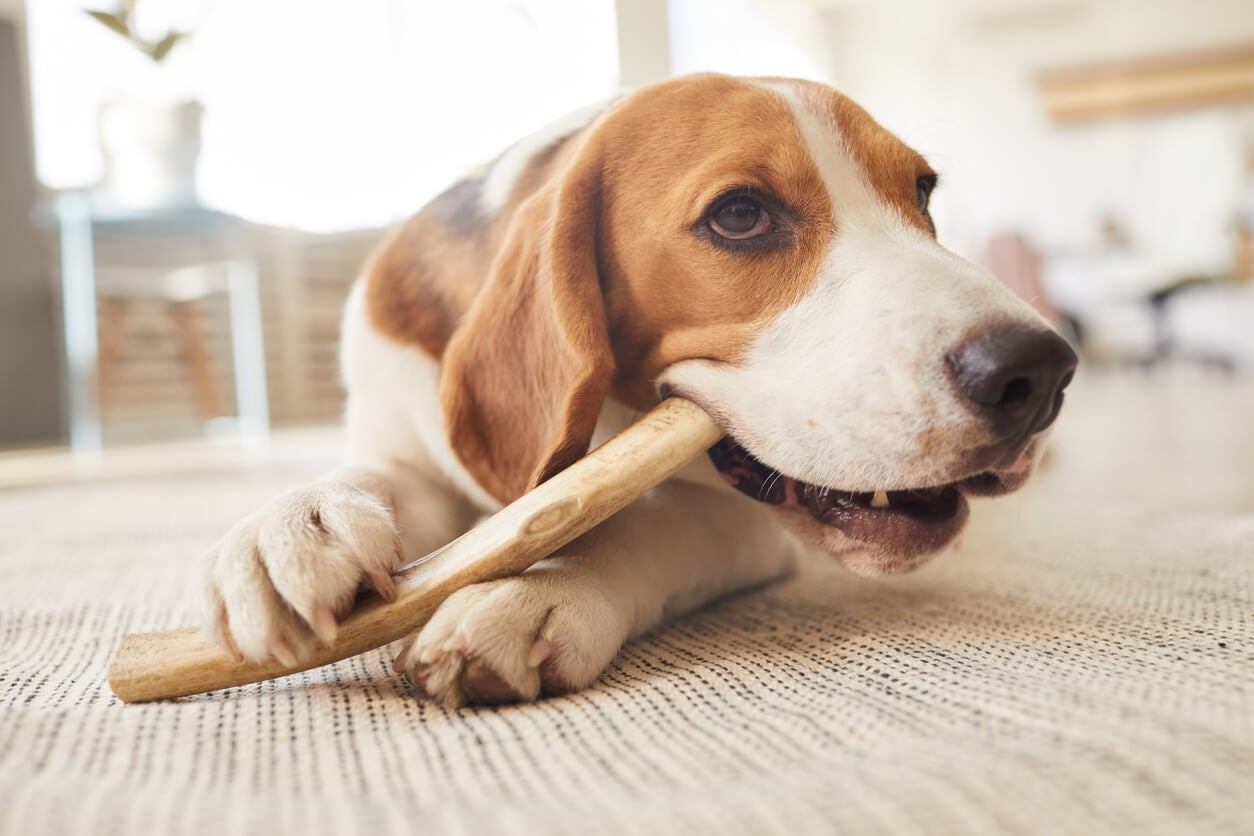
Ever had the thought while sitting in the dentist’s chair, holding your mouth open, trying to answer the hygienists’ next question, “How could they possibly do this on fluffy?” To be honest we can’t, at least not without anesthesia. No one could expect fluffy to sit still through a thorough oral exam, scaling, cleaning under the gum line and radiographs. This brings up the question of “anesthesia-free dentals”, what they entail and the risks. But I’m getting ahead of myself lets first discuss dental disease in our pets, problems that arise from untreated periodontal disease, and the benefits of preventative cleanings.
Can Pets Get Dental Diseases Like Humans Do?
All too often we forget that our pets’ teeth are susceptible to the same diseases as ours. Halitosis or bad breath is a common finding for pets and is an indicator of bacteria lurking under the gum line. This can lead to gum disease. Studies by the American Animal Hospital Association (AAHA) reveal that two-thirds of pet owners do not provide the dental care recommended by veterinarians. Dental calculus, when left untreated, can lead to gingivitis, periodontal disease, tooth loss, and even bone loss. These diseases can cause pain and discomfort to our beloved pets leading to decreased appetite and ultimately other health issues.
Pet Dental Care
Some pets with a gingival disease can have little to no visible calculus build up which gives pet parents a false sense of security about their pets’ oral health. The America Veterinary Dental College states “The main problem develops as plaque spreads under the gum line. Bacteria in this plaque set in motion a cycle of damage to the supporting tissues around the tooth, eventually leading to tooth loss. Bacteria under the gum line secrete toxins, which contribute to damage and also stimulate the animal’s immune system.” Periodontal disease comes in many different severities and often cannot be fully evaluated without an oral exam performed under anesthesia. It can progress from simple gingivitis to weakening of the jaw bone, bone infection, and fistulas from the mouth to the sinus cavity. Bacteria from the mouth then enter the bloodstream and studies in dogs have shown that these cause changes in the liver, kidney, and heart.
Can Pets Have Their Teeth Cleaned?
Looking for pet dental care options? An anesthetic dental cleaning has numerous positive and lifesaving benefits and with veterinary medicine today carries less risk than was previously seen. What does a comprehensive dental cleaning include?
- A complete oral exam to recognize areas of infection or pain. Dental radiographs may be recommended to identify any broken or abscessed teeth prior to extraction.
- A full dental cleaning including under the gum line where the majority of detrimental bacteria are found.
- Professional scaling and polishing. It’s this polishing step that prevents “grooves” from remaining on the surface that leads to bacterial attachment. This stage is unable to be performed in an anesthesia-free “dental cleaning” and can lead to long term damage.
- An anesthetic technician is with the pet throughout recovery and pets generally are able to go home that day. Your veterinarian can now give specific recommendations for your pets home dental care.
Do not hesitate to ask questions regarding anesthesia. Most veterinarians are happy to discuss our anesthetic protocols, monitoring practices, and procedures. As an AAHA accredited hospital, we are required to keep anesthesia safety records and follow strict safety guidelines and would be more than happy to discuss these with pet parents.
An anesthesia-free dental “cleaning” is in fact just the scaling of the teeth without sedation. Just as it sounds this means your pet must be restrained in order for them to access the teeth. As much as they say it is just like a human going to the dentist this is not the case. While few may tolerate it they are still being restrained for a period of time with no ability to understand why. The downfalls of this procedure are: no through oral exam performed, inability to polish the teeth causing grooves for bacterial growth, and incapable of clean under the gum line leading to the progression of periodontal disease. All of this without considering the pain and discomfort caused to your pet. Whiter teeth do not mean a clean and healthy mouth, and while it may be less expensive initially it is mainly a cosmetic procedure and ultimate the cost to both your pets health and your wallet are far greater (AVDC). For tips on what to say to providers of these anesthesia-free dentals see the American Veterinary Dental College’s website.
Works Cited:
“Periodontal Disease.” AVDC. American Veterinary Dental College, Web. 3 Dec 2015.
“AAHA Dental Care Guidelines for Dogs and Cats” American Animal Hospital Association. 2013. Web. 3 Dec 2015.
“What is an anesthesia-free dental cleaning?” AVDC. American Veterinary Dental College, Web. 3 Dec 2015.
